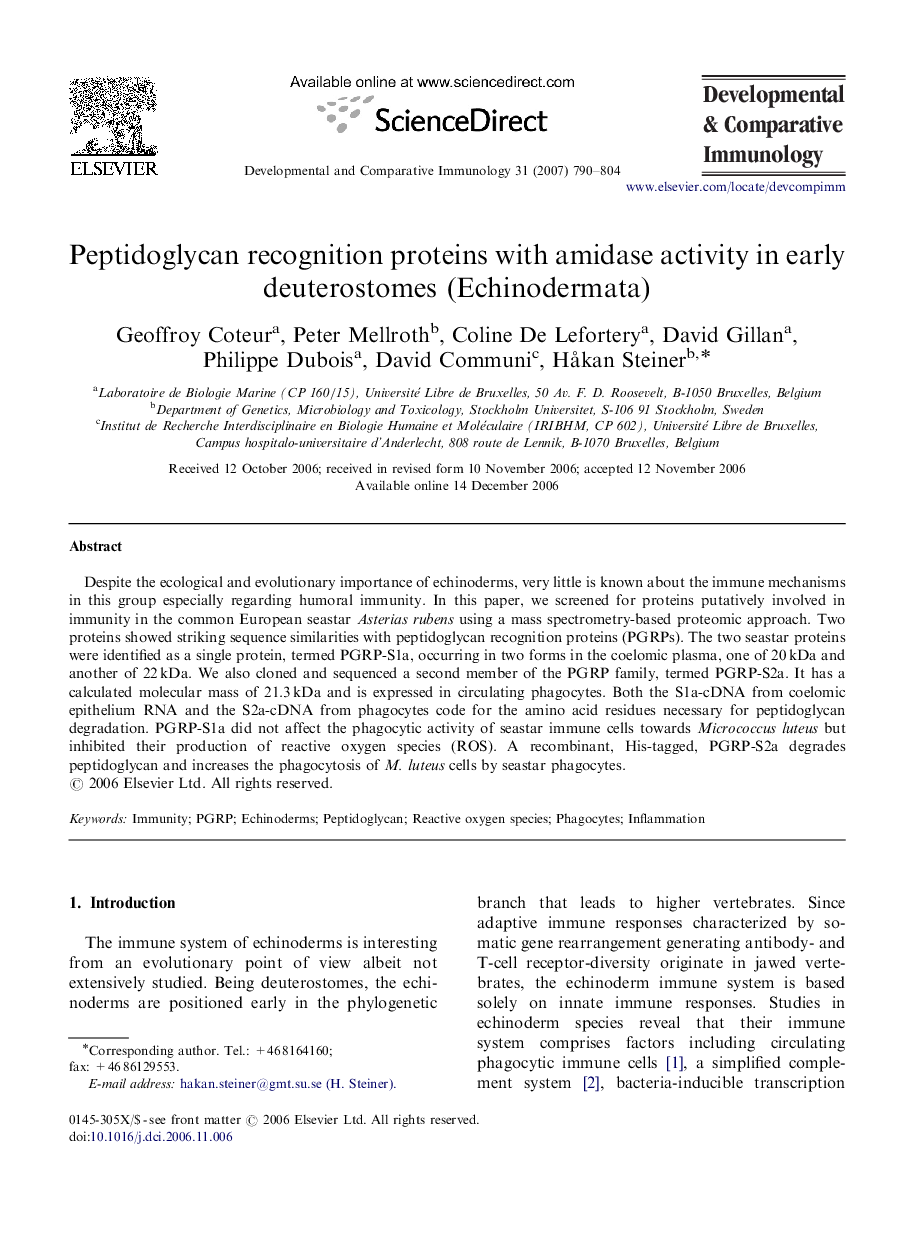| Article ID | Journal | Published Year | Pages | File Type |
|---|---|---|---|---|
| 10971736 | Developmental & Comparative Immunology | 2007 | 15 Pages |
Abstract
Despite the ecological and evolutionary importance of echinoderms, very little is known about the immune mechanisms in this group especially regarding humoral immunity. In this paper, we screened for proteins putatively involved in immunity in the common European seastar Asterias rubens using a mass spectrometry-based proteomic approach. Two proteins showed striking sequence similarities with peptidoglycan recognition proteins (PGRPs). The two seastar proteins were identified as a single protein, termed PGRP-S1a, occurring in two forms in the coelomic plasma, one of 20Â kDa and another of 22Â kDa. We also cloned and sequenced a second member of the PGRP family, termed PGRP-S2a. It has a calculated molecular mass of 21.3Â kDa and is expressed in circulating phagocytes. Both the S1a-cDNA from coelomic epithelium RNA and the S2a-cDNA from phagocytes code for the amino acid residues necessary for peptidoglycan degradation. PGRP-S1a did not affect the phagocytic activity of seastar immune cells towards Micrococcus luteus but inhibited their production of reactive oxygen species (ROS). A recombinant, His-tagged, PGRP-S2a degrades peptidoglycan and increases the phagocytosis of M. luteus cells by seastar phagocytes.
Related Topics
Life Sciences
Biochemistry, Genetics and Molecular Biology
Developmental Biology
Authors
Geoffroy Coteur, Peter Mellroth, Coline De Lefortery, David Gillan, Philippe Dubois, David Communi, HÃ¥kan Steiner,
